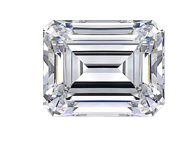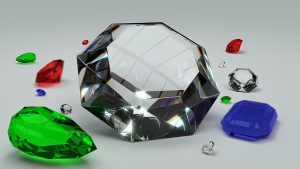Diamond grading 4c’s
DIAMOND 4c’s GRADING
When it comes to grading a diamond, there are four main grading parameters that will determine the diamond price and rarity .
This are the 4c’s : clarity, color, cut, carat (weight).
CLARITY: About the Clarity of a Diamond.
The clearer the diamond, the higher the price
scale was developed to have a universal rating system of diamonds imperfections. Clarity is an important aspect of a diamond, and it is important to know how the grade of diamond clarity before you buy a diamond ring online. It is actually easy to learn how to grade the clarity of a diamond before you buy a diamond online.

There are two things that you must take note; Diamonds with visible inclusions and blemishes, and those that are ‘eye clean’ meaning that there are no inclusion or blemishes that can be seen with the naked eye.
From there, the clarity of a diamond is further broken down into sub-categories. Most people mistakenly thinks that Diamond clarity refers to how clear a diamond wene set on a diamond engagement ring But this is not true.
Clarity refers to the internal and external imperfections of the diamond.
The best diamond, of course, has a grade of FL or IF, Flawless or Internally. Flawless this mean that it is perfect. A grade of I1, I2 or I3 means that the diamond is imperfect, with a grade of I3 being the worst.
Other grades are VVS1 and VVS2, which means that the diamond is very slightly imperfect. VS1 and VS2 this means the loose diamond is very slightly imperfect. SI1 and SI2, which means that the diamond is imperfect.
COLOR
When it comes to the 4C’s of diamonds, color, or lack of it, is an especially important characteristic to determine the diamond price. When grading diamond for the color, it is important to have a Master Color Diamond set (pre-graded diamond usually D-F-H-I) to compare the diamond being graded. Diamonds are given a letter grade to represent the level of color, starting with the letter D for a flawless, colorless diamond. Why is it letter D and not C, B or A? The main reason we have heard is that when diamonds started being graded for color with this scale, it started with D to give room for the extremely rare possibility that special diamond would be discovered that was even more flawless than flawless. It hasn’t happened yet!

The color grades of D, E, and F are the rarest and most colorless. The gradations in color can only be seen by an expert gemologist lab. The grades G-H are called near colorless, and the difference can be seen by a casual observer only when compared to a higher-grade diamond. A loose diamond of this grade categories is an excellent value.
Most color in the colored diamonds comes from impurities between the cells of the crystals, or structural defects. There are many different colors that diamonds can come out in, but they are limited to steel gray, pink, yellow, green, white, and blue to purple, brown and black.
There are many different colors that diamonds can come out in, but they are limited to steel gray, pink, fancy yellow, green, white, and blue to purple, brown and black.
The color grading: D,E, F – colorless, G,H, I, J- nearly colorless, K,L,M – faint yellow, N,O,P,Q,R- very light yellow, S,T,U,V,W,X,Y,Z- light yellow to strong yellow.
CUT
The particular shape also matters a great deal when engagement ring, if the diamond is poorly cut, it will definitely lose its sparkle. The cutting of a diamond and proportioning is called “make” in the jewelry trade are of extreme importance. The fire (variety and concentration of the bright colors emitted) and the brilliance directly depend on the proper cutting and proportion of the diamond.
The cutting of a diamond and proportioning is called “make” in the diamond jewelry trade are of extreme importance. The fire (variety and concentration of the bright colors emitted) and the diamond brilliance directly depend on the proper cutting and proportion of the diamond.
However, in the wholesale diamond industry the cut of a diamond doesn’t refer to its shape at all. Instead, this is a reference to the diamond durability, clarity, width, depth, brilliance, and other aspects of the diamond. Common cutting problems include a missing or off center culet, misalignment, and a diamond that is too thick or too thin, cracks, or broken culets. When you are shopping for a diamond, you should, of course, choose the shape that you like and prefer best. But when you look at several types of that diamonds of that shape to find the one with the best cut the one that sparkles the most in all type of lightning fire.
Common cutting problems include a missing or off center culet, misalignment, and a diamond that is too thick or too thin, cracks, or broken culets. When you are buying a diamond or buying a diamond engagement ring online you should of cours choose the shape that you like and prefer best.
But when you look to buy diamond online several types of that diamonds of that shape to find the one with the best cut the diamond that sparkles the most in all type of lightning fire.
CARAT 
This one is simple; the more carat you have in a diamond, the bigger the diamond size will show on a piece of jewelry.
Diamond are measured by carat weight and not size. Two diamonds having the same weight could have different millimeter sizes because a diamond is three-dimensional meaning length, depth, and width. The
The carat is the weight of the substantial diamonds measured in metric carats, one carat equals 1/5 gram and is subdivided into 100 points.when choosing a diamond ring online You should know that
When choosing a diamond ring online You should know that carat weight is the most objective grade of the 4C’s.